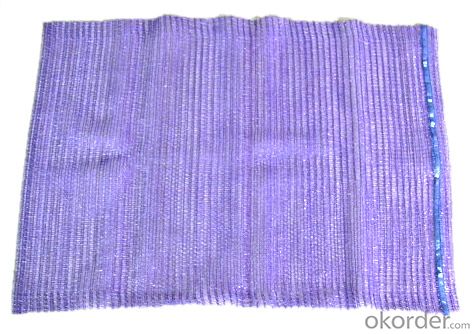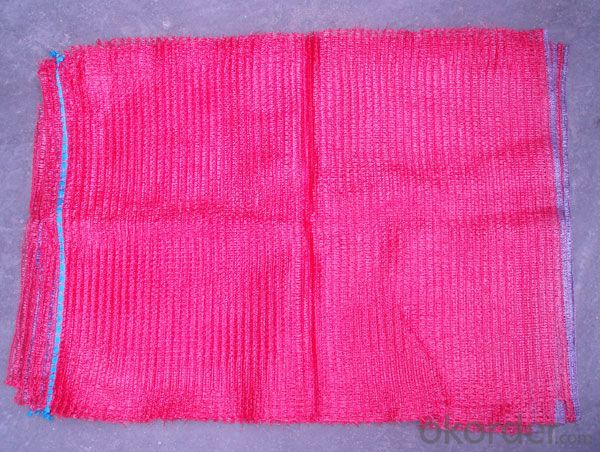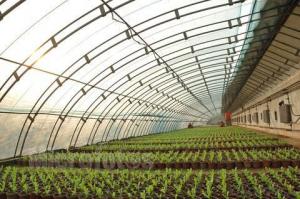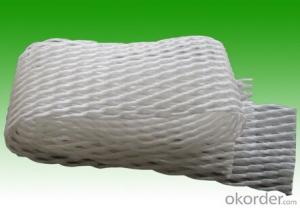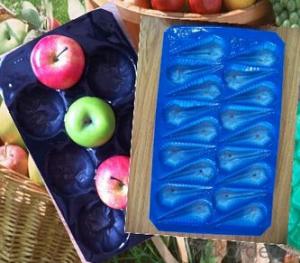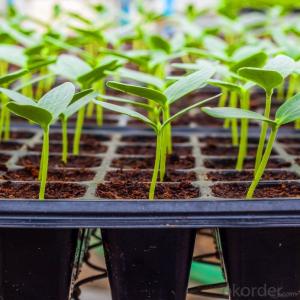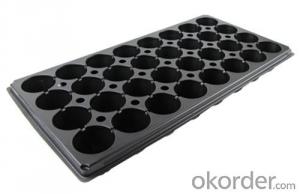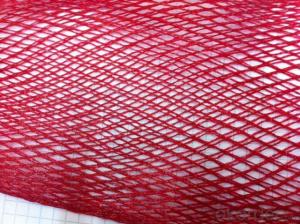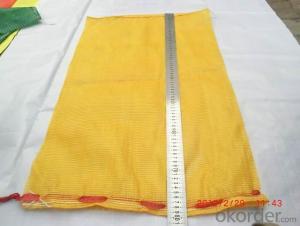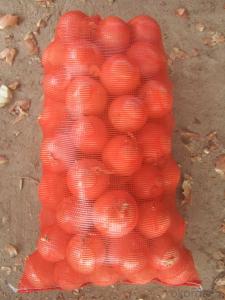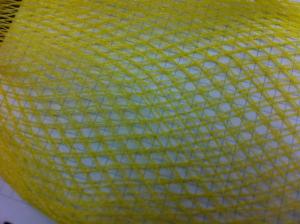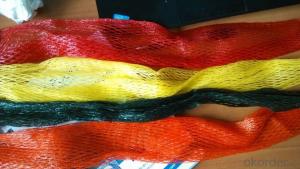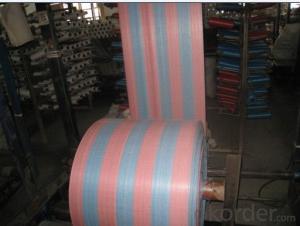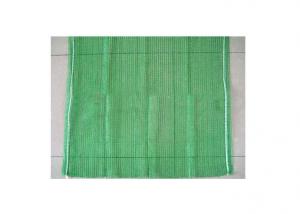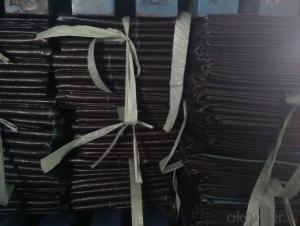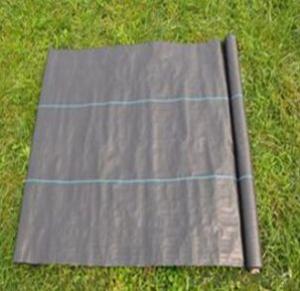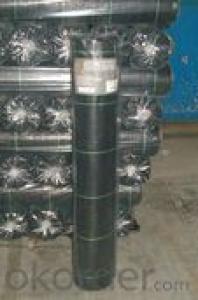Vegetable Fruit Mesh Bag Drawstring for Potato
- Loading Port:
- Shanghai
- Payment Terms:
- TT OR LC
- Min Order Qty:
- 10000 m²
- Supply Capability:
- 1000000 m²/month
OKorder Service Pledge
OKorder Financial Service
You Might Also Like
Product Name of Vegetable Fruit Mesh Bag Drawstring for Potato:
PE Mesh Bag VIOLET
Loading Port: Shanghai port, China
Min.order quantity: 1*20GP
Supply Capability: 20*40HC per month
Payment Terms: TT or LC
Introduction of Vegetable Fruit Mesh Bag Drawstring for Potato:
This products is made by HDPE (High-Density Polyethylene) or PP (Polypropylene), it is used for packing olive, onions, potatoes, and so on.
Specification of Vegetable Fruit Mesh Bag Drawstring for Potato:
30x50cm, 40x60cm, 42x70cm, 50x80cm, 55x78cm, 55x85cm, 57x86cm, 60x90cm, etc.
Width and length are as customers’ request.
Color: red, green, yellow, white, pink, orange, purple, as per your requirements
Top: Hemmed or locked, with drawstring or without, handle is available
Bottom: Single fold or double fold. Single stitch or double stitch
Printing: on one side or both sides, in one color or multi-colors
Application of Vegetable Fruit Mesh Bag Drawstring for Potato:
It can be used packing onions, potatoes, apples, orange and other vegetables or fruits. It can hold heavy enough produces
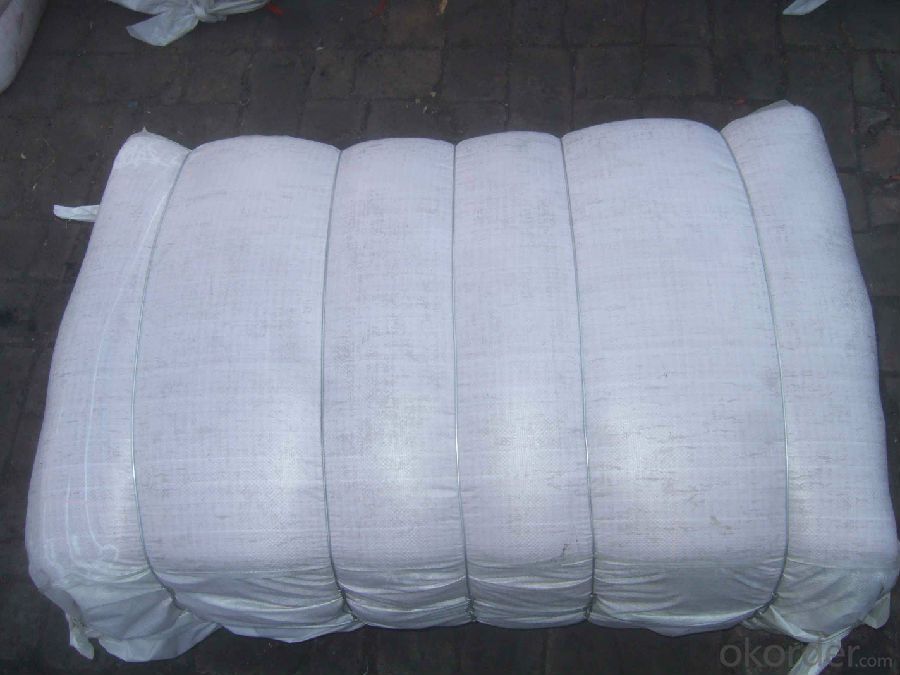
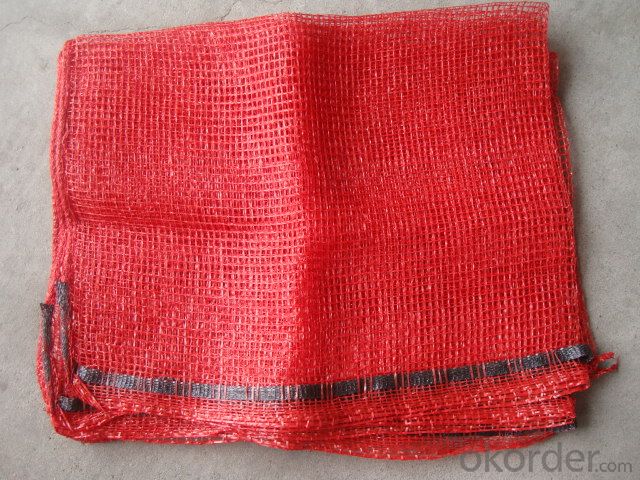
FAQ of Vegetable Fruit Mesh Bag Drawstring for Potato:
Q: How to guarantee the quality of the products?
A:We have established the international advanced quality management system,every link from raw material to final product we have strict quality test;We resolutely put an end to unqualified products flowing into the market. At the same time, we will provide necessary follow-up service assurance.
Q: How long can we receive the product after purchase?
A:In the purchase of product within three working days, We will arrange the factory delivery as soon as possible. The pecific time of receiving is related to the state and position of customers.Commonly 30 to 35 working days can be served.
Q: HOW TO GET A SAMPLE?
A: FREE samples for Agricultural Patato Mesh Bag HDPE Material 25g are available for your checking and testing. And to get free samples, you need to send us you detailed receiving address (including post code) and your DHL/FedEx/UPS account for collecting samples, courier cost will be paid in your side.
- Q: What are the potential health risks associated with the use of plastic materials in agriculture?
- <p>There are several health concerns related to the use of agricultural plastic products. These include the potential for leaching of harmful chemicals into the soil and water, which can contaminate crops and enter the food chain. Additionally, the breakdown of plastics can release microplastics into the environment, which may be ingested by humans and animals, posing a risk to health. There's also the issue of pesticide residues on plastic films, which can be harmful if not managed properly. Furthermore, the disposal of plastic waste from agriculture can lead to environmental pollution and potential health hazards if not handled with care.</p>
- Q: Can someone tell 3 different forms to recycle or reused the plastic,but I need them short
- The common process that is used in recycling plastic is the inverse polymerization process where the polymers in the plastic are converted into initial monomers that were used in the manufacture. These chemicals are then purified and synthesized to form new plastic materials. Assorted polymers are converted into petroleum in another recycling process. The advantage of this process is that any mix of polymers can be used. A new recycling process generates heat from the friction of plastic materials which melts the plastics. This is then pumped into casting moulds. The great advantage of this technique is that all types of plastics can be recycled.
- Q: i did an experiment in class about stretching plastics and i need to explain why some of the plastics were stronger than others!i know its something to do with short and long molecules but yeah...!! help me please :):):thatnkyou!xxx
- When you stretch plastic, it heats up. This heat causes a change in the molecular structure of the plastic allowing it to stretch. The stronger a bit of plastic is, the more tightly bound the molecules are. Different plastics have different melting points as well. A few types of plastic that you might deal with every day are HDPE (plastic bags and milk jugs), Polycarbonate (clear plastic drink cups) and PET-E (soda bottles) Each of these plastics start to soften at about 300F (degrees Farenheit) HDPE becomes molten (liquid like and able to be formed) at about 350F Polycarbonate at about 400F PET-E at about 375F If I remember correctly. Anyways, I hope the explanation of melting points and heat help to explain why some plastics are stronger. In some cases the thickness of the material matters as well.
- Q: my cat loves to lick plastic bags and pictures whygt;
- Many cats lick or gum plastic bags. The leading theory seems to be that materials that the bag was made from attract cats. Many plastic bags are made out of substances which are biodegradable, such as corn, and the smell and taste attract the cats. We have two cats who gum bags and we had another - my good friend Tom - who liked to gum photographic prints - prints on photographic paper, not inkjet printed photos. Licking or gumming is one thing, eating plastic is another. Just be sure they aren't actually eating the plastic. I don't think it would be very good if they are actually eating it.
- Q: the bottles must of low weight and be able to be steralised.we are planning to introduce at holy places like tirumala.as the plastics contributed to the forest by piligrims is increasing day by day.the plastic bottles are to of who standards.
- Plastic bottles usually are numbered on how many times it could be re-used. Look for the number at the bottom. Plastic bottles with lexan are light weight and reusable.
- Q: How do you establish ground cover plants in existing landscapes?
- To establish ground cover plants in existing landscapes, you need to follow a few steps. Firstly, prepare the area by removing any weeds, rocks, or debris that may hinder growth. Next, loosen the soil and amend it with organic matter to improve its fertility and drainage. Choose ground cover plants that are suitable for the specific environmental conditions of the landscape, such as sun exposure and soil type. Dig holes for each plant, ensuring they are spaced appropriately to allow for their spreading growth habit. Plant the ground cover plants at the same depth they were growing in their nursery containers. Water them thoroughly after planting and mulch around the plants to conserve moisture and suppress weed growth. Regularly water and maintain the ground cover plants until they become established, which may take several months. Finally, monitor their growth and provide ongoing care, including occasional fertilization and pruning as needed.
- Q: i need an experiment to determine if plastic is porous thanks in advanced for any help you give
- to test the porosity of plastic (which i'm pretty sure not many are) 1. take a small tub and fill it with water 2. weigh your sample of plastic then put it in the water for a set time, say two minutes. 3. take the plastic out of the water and re-weigh to find the difference. if the plastic weighs more, then it's holes have been filled with water, like a sponge, and you can see exactly how much water it's taken up with this test. hope thats what youre looking for!
- Q: How does ground cover impact the overall soil structure?
- Ground cover can have a significant impact on the overall soil structure. It helps to prevent soil erosion by reducing the impact of raindrops on the soil surface, which in turn reduces the loss of topsoil. Ground cover also helps to improve soil moisture retention by reducing evaporation and providing shade to the soil surface. Additionally, ground cover can enhance soil fertility by adding organic matter as it decomposes, thus improving soil structure and increasing nutrient availability.
- Q: What are the advantages of using plastic honeycomb panels in beekeeping?
- Plastic honeycomb panels offer several advantages in beekeeping. Firstly, they are lightweight and easy to handle, making them convenient for beekeepers when assembling or moving hives. Secondly, the plastic material is durable and resistant to moisture, ensuring a longer lifespan compared to traditional wooden frames. Additionally, the hexagonal shape of the honeycomb cells in these panels provides structural stability, allowing bees to build their combs more efficiently. This design also allows for easy inspection and manipulation of the hive, making beekeeping tasks such as honey extraction or colony management simpler. Overall, plastic honeycomb panels contribute to improved productivity, longevity, and ease of maintenance in beekeeping operations.
- Q: What types of ground cover are best for rock gardens?
- Some of the best ground cover options for rock gardens are creeping thyme, creeping phlox, sedum, and moss. These plants are low-growing, drought-tolerant, and can provide beautiful colors and textures that complement the rocks.
Send your message to us
Vegetable Fruit Mesh Bag Drawstring for Potato
- Loading Port:
- Shanghai
- Payment Terms:
- TT OR LC
- Min Order Qty:
- 10000 m²
- Supply Capability:
- 1000000 m²/month
OKorder Service Pledge
OKorder Financial Service
Similar products
Hot products
Hot Searches
Related keywords








